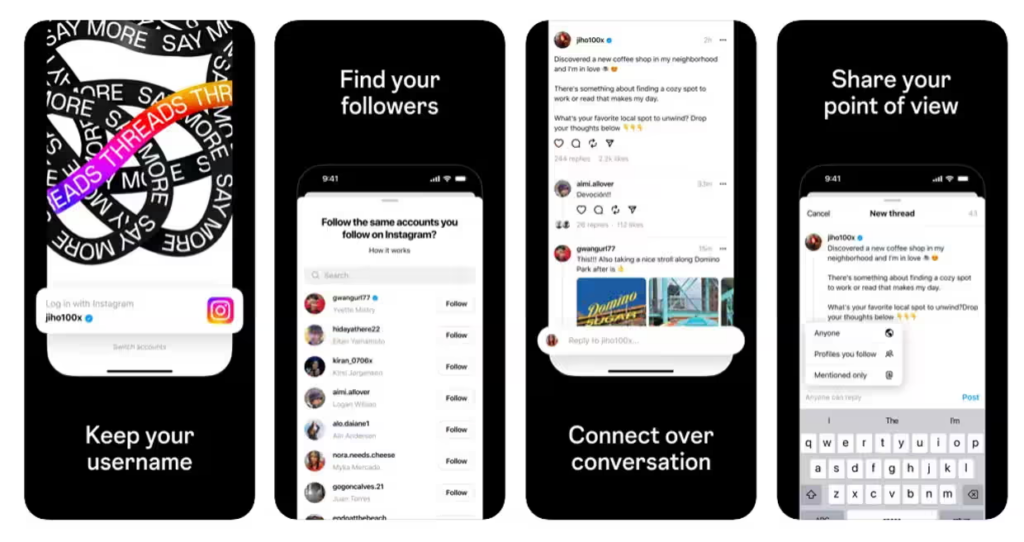In the ever-evolving landscape of social media, a new player, Threads, has emerged and is causing quite a stir. Positioned as a direct competitor to Twitter, Threads has been making waves with its innovative features and fresh approach to social networking. In this article, we will delve into the key aspects of Threads and how it challenges Twitter’s social dominance.
The Birth of Threads
It emerged in response to growing concerns about information overload and the rise of toxic interactions on established social media platforms. Developed by a group of tech enthusiasts, Threads aimed to provide a more curated and focused experience for users seeking meaningful conversations and connections.
Streamlined Interface and Focus on Threads
In contrast to Twitter’s chronological feed, the Meta product adopts a more streamlined interface. It prioritizes discussions based on relevance, quality, and user interactions. The platform emphasizes the post as the central unit of communication, encouraging users to engage in more in-depth discussions and fostering community-driven conversations.

Enhanced Privacy and Safety Features
A key differentiator for Threads is its robust emphasis on user privacy and safety. In contrast to its predecessors, it incorporates advanced algorithms and community moderation to combat hate speech, harassment, and misinformation effectively. The platform is intentionally designed as a secure space where users can freely share their thoughts without fearing retaliation.
Threads Curation and Personalization
As a competitor to Twitter, Threads harnesses the power of AI to curate personalized content for each user. By analyzing user behavior and interests, the platform delivers tailored content and recommendations, ultimately enhancing the overall user experience. This targeted approach not only assists users in discovering relevant threads but also ensures a higher level of engagement.
Thread Ownership and Virality
A distinctive feature is the concept of “Thread Ownership.” In contrast to Twitter, where retweets can lead to the virality of a tweet, Threads places more emphasis on the initial poster. This approach allows them to have greater control over the reach and visibility of their discussions. The goal is to foster more meaningful interactions and discourage the spread of misinformation.
Groups and Communities
Threads introduces “Communities,” which are groups of users with shared interests, fostering focused conversations and connections. This feature distinguishes Threads from Twitter’s traditional hashtag-based search, offering a more organized experience.

Competition and Industry Response
Twitter’s dominance in the social media space has attracted numerous competitors over the years, with most falling short of making a significant impact. The Meta extension, however, seems to be gaining momentum, drawing attention from both users and industry experts. Twitter’s response to this emerging threat remains to be seen, but it is likely that the competition will drive both platforms to innovate and improve.
Conclusion
This arrival as a direct competitor to Twitter has injected new energy into the social media landscape. With its focus on meaningful conversations, enhanced privacy features, and community-driven discussions, it has managed to differentiate itself in a highly competitive market. As it continues to grow and refine its platform, the battle for social media supremacy between Threads and Twitter promises to be an exciting one to watch.


